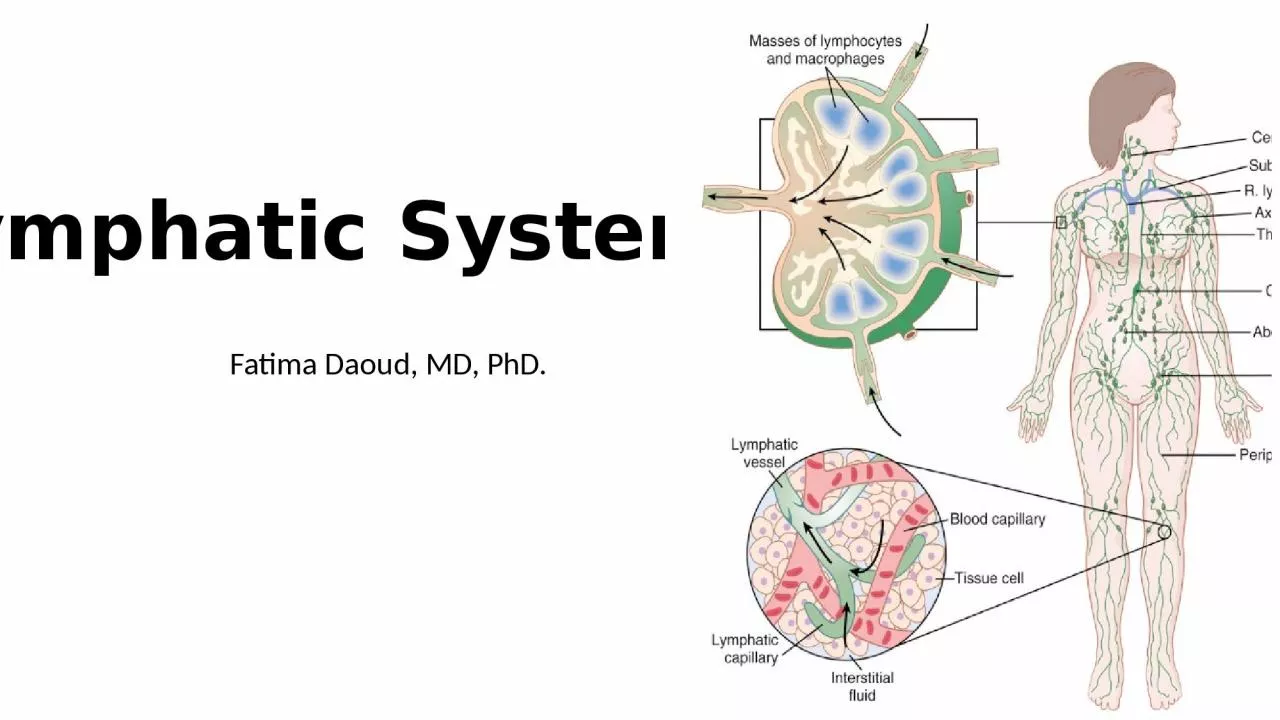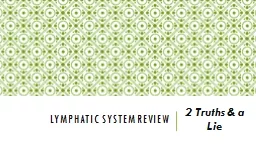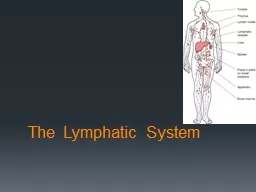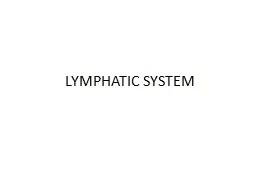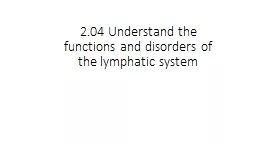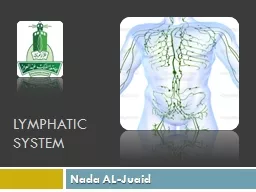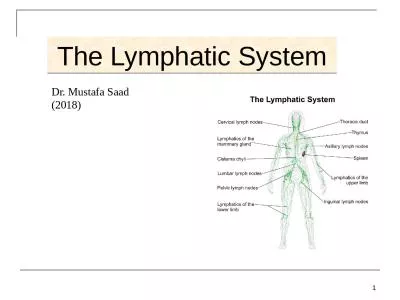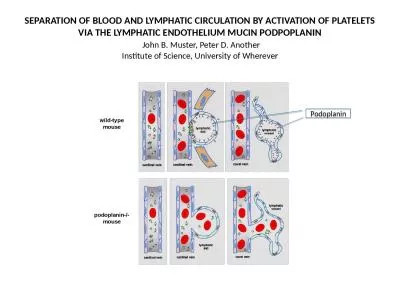PPT-Lymphatic System Fatima Daoud, MD, PhD.
Author : isla | Published Date : 2024-02-03
Blood hydrostatic pressure pushes fluid out of capillaries filtration Blood colloid osmotic pressure pulls fluid into capillaries reabsorption Hematology Body Fluids
Presentation Embed Code
Download Presentation
Download Presentation The PPT/PDF document "Lymphatic System Fatima Daoud, MD, PhD." is the property of its rightful owner. Permission is granted to download and print the materials on this website for personal, non-commercial use only, and to display it on your personal computer provided you do not modify the materials and that you retain all copyright notices contained in the materials. By downloading content from our website, you accept the terms of this agreement.
Lymphatic System Fatima Daoud, MD, PhD.: Transcript
Download Rules Of Document
"Lymphatic System Fatima Daoud, MD, PhD."The content belongs to its owner. You may download and print it for personal use, without modification, and keep all copyright notices. By downloading, you agree to these terms.
Related Documents

